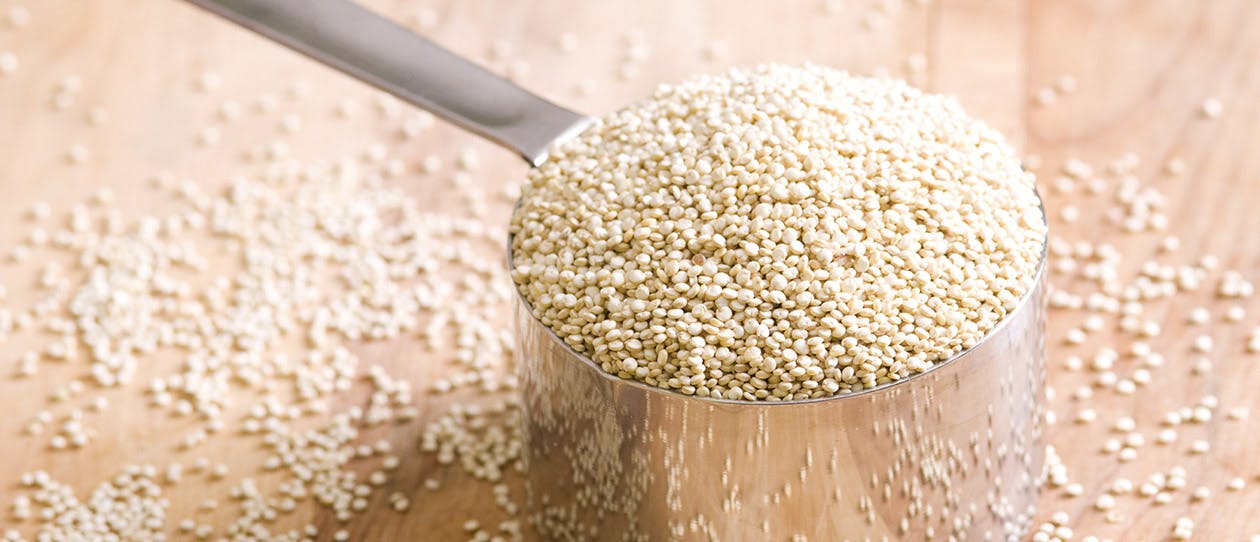
Did you know?
The peel or outer layer of most grains, fruits and vegetables contains the highest amount of fibre. Avoid highly processed grains and eat the whole fruit or vegetable where possible.


So what actually is fibre? Believe it or not it is difficult to clearly define.
To make it simple, fibre is best thought of as those plant food components that are indigestible and not absorbed from our digestive tracts. This does not include all non-digestible substances, though, and this is where the definition can get a bit tricky. So, think of it this way: fibre comes from plants, it adds bulk to our stools and we don’t absorb it.
How is this health promoting, you may ask? Read on to find out.
To begin, it’s worthwhile talking a little bit about the different types of fibre.
Fibre is commonly described as a member of one of these two main categories:
1. Soluble fibre
Soluble fibres get their name from their ability to be dissolved in hot water. Types of water-soluble fibres include pectin, gums, mucilages and some hemicelluloses. Soluble fibres draw fluid into the intestinal tract. They tend to slow down the passage of food making the stools easier to pass.
2. Insoluble fibres
Insoluble fibres do not dissolve in hot water. These include cellulose, lignin and some hemicelluloses. In general, vegetables and grains contain more insoluble fibres than soluble fibres. Insoluble fibres decrease the amount of time it takes food to pass through the intestinal tract, and they also promote bacterial growth in the colon. This is a good thing, as these bacteria contribute to stool bulk and aid detoxification.
Although they are defined separately, there is a lot of crossover with the effects of these two types of fibre.
Plant foods (ie. fruits, vegetables and cereal grains) are all good sources of dietary fibre, and the closer they are to their natural state the better. For example, highly processed wheat flour in white bread contains much less fibre than a slice of wholegrain bread. Likewise, munching on a carrot rather than drinking carrot juice is the difference between high fibre and no fibre.
The National Health and Medical Research Council (NMHCR) advise that the adequate daily intake (AI) of fibre for men is 30g/day and 25g/day for women. Increasing fibre intake has been linked to lower rates of obesity, cardiovascular disease and diabetes.
To put AI recommendations into perspective, here is a list of some foods and their fibre content per 100g:
| Total fibre | Soluble | Insoluble | |
| Wheat Bran: | 46.6g | 3.6g | 43g |
| Flax Seeds: | 32.0g | 10.5g | 22g |
| Oat Bran: | 30.3g | 15.3g | 15g |
| Capsicum (green, raw): | 19.1g | 7.1g | 12g |
| Figs (dried, raw): | 8.5g | ||
| Prunes (dried, raw): | 16.1g | ||
| Rolled Oats: | 15.5g | 8.5g | 7g |
| Almonds: | 14.3g | ||
| Rye Flour (dark): | 14.0g | ||
| Peas (frozen, cooked): | 12.0g | ||
| Cucumber (raw): | 11.4g | 4.4g | 7g |
| Sweet Potato: | 10.3g | 4.3g | 6g |
| Baked Beans: | 7.3g | ||
| Rye Flour (light): | 7.0g | ||
| Apricots (dried, raw): | 6.7g | ||
| Brown Rice (cooked): | 5.5g | ||
| Carrots (cooked): | 3.3g | ||
| Broccoli (cooked): | 2.9g | ||
| Cabbage (cooked): | 2.8g | ||
| Brussels Sprouts (cooked): | 2.6g | 1.2g | 1.4g |
| Celery (raw): | 1.7g | ||
| Lettuce: | 0.5g |
The peel or outer layer of most grains, fruits and vegetables contains the highest amount of fibre. Avoid highly processed grains and eat the whole fruit or vegetable where possible.
References available on request